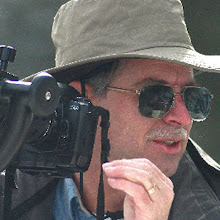Muddy Pass is located along US 40 and near Rabbit Ears Pass, heading west towards Steamboat Springs. We stopped at Muddy Pass Lake to watch the wildlife and photograph the flowers. Since there was direct sun with no cloud cover, the wildflower captures were limited, due to contrasty lighting.
Thursday, July 10, 2025
Pictures of the Day 7/9/25 - Muddy Pass Area
Pictures of the Day 7/7/25 - Crested Butte Area
Crested Butte is really the capital of Colorado wildflowers and each year they hold a wildflower festival. We timed our arrival to just a few days ahead of the crowds and most of these were taken near Lake Irwin, just west of Crested Butte.
Scarlet Gilia (KW)Blue Flax (KW)
Wildflower abstract, 1/4-second exposure with motion (KW)
Pictures of the Day - 7/6/25 - Lake City Area
We'll start off with the baby donkey at the Gunnison KOA camp. We've camped here before and the camp has a variety of goats, donkeys and now a baby cow. All but the cow are allowed to wander about the camp.
Today, we traveled around the Lake City area and particularly County Roads 20 and 30, which lead to Engineer Pass and Cinnamon Pass, respectively. Here are a few wildflowers found mostly above 10,000 feet.
Columbines with Log (SW)Friday, July 04, 2025
Pictures of the Day 7/3/25 - Telluride and Ophir Road Area
Today, we woke to building stormy weather, perfect for wildflower photography! Clouds helps to diffuse the bright sun, revealing fine details in the shaded areas of the images. Water droplets on the flowers just adds to the appeal. See "Photographing Forests" (Nov. 16, 2011) below for a good example.
We decided to check out the Ophir Road just south of Telluride, off Colorado Highway 145. To get there from Ridgeway, take Colorado Highway 62 west to CO-145 and head south past the turnoff to Telluride. Ophir is a small mining town, now populated with several summer cabins and a few permanent residents. The road is paved and graded gravel further up. Speed limit is 10 mph through town and they ensure this by creating deep dips in the roadway (opposite of 'speed bumps'). On to the flowers!
Foxtail grass seeds (KW)Pictures of the Day 7/2/25 - Owl Creek Pass Area
Today was productive for wildflower photos. The road to Owl Creek Pass and environment is one of my favorite routes within the Uncompagre Mountains of Colorado. Unlike most other routes requiring 4WD and high clearance vehicles, this road is a relatively tame county road, which turns into a marked forest service road and normal vehicles may travel on it safely. I've led many a photo tour through on this route.
To follow this route, start on US Highway 550 north of Ouray, CO, and turn east on County Road 8. Follow this road through farms and ranches until it turns into Forest Service 858/CR8. Proceeding via numerous hairpin turns, you'll wind up to Owl Creek Pass (elevation 10,118). Continue on to Silver Jack Reservoir. If you'd like to make a loop trip, continue north through more farms and ranches to US Highway 50, which heads back to Montrose, then south on US 550 back to your starting point. Otherwise, return the way you came.
One interesting side note, the film True Grit, starring John Wayne, was filmed near the pass (the scene on horseback of him shooting rifles with each hand), as well as the area around Ridgeway, CO.
On to the flowers!























































